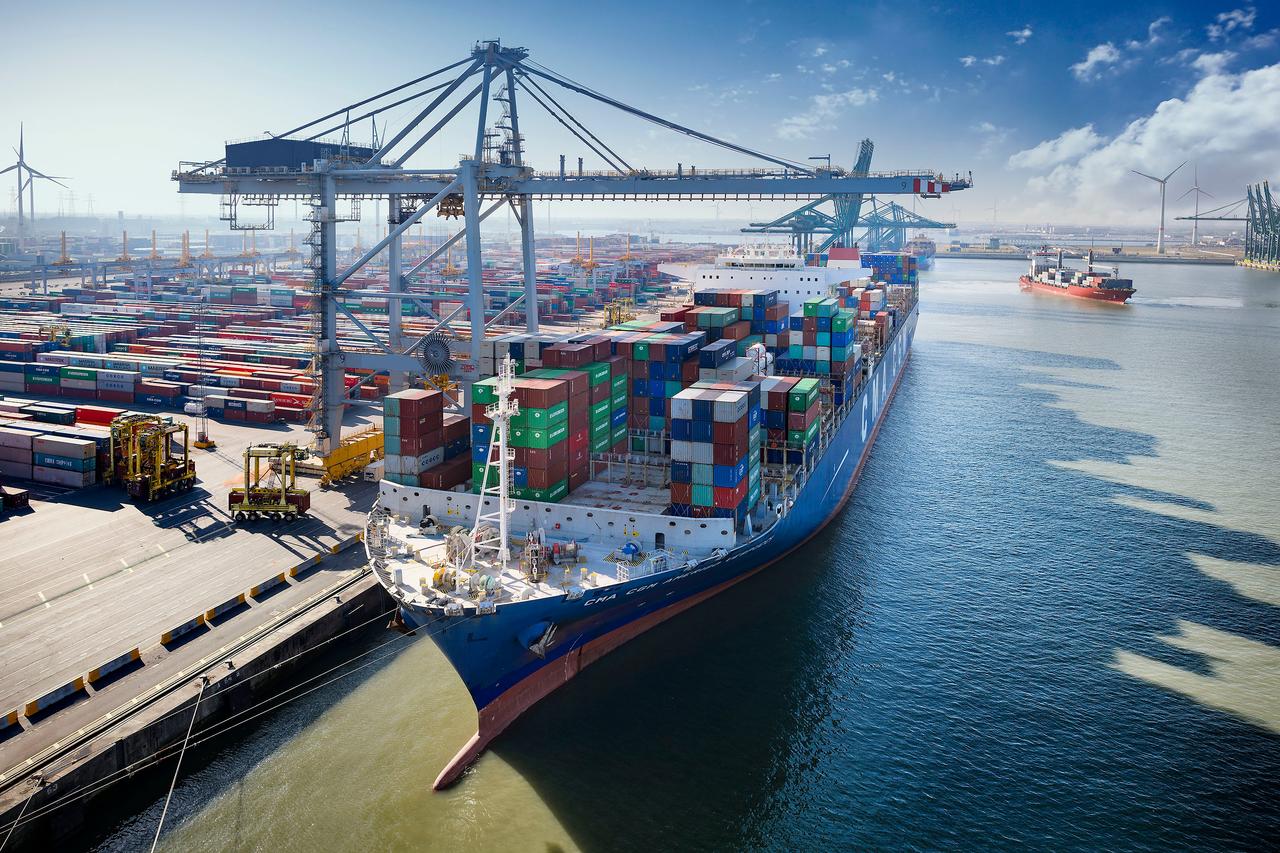
Supply chains across the world are experiencing significant challenges. The global economy is becoming more decentralised as part of a trend dubbed by economists as ‘slowbalisation’ – a phenomenon characterised by a slowdown of global integration.
Traditionally, industries such as pharmaceuticals, automotive and electronic components have had complex manufacturing processes spanning multiple locations across various country boundaries. These global value chains are characterised by a lack of coordination and are primarily powered by obsolete spreadsheet-based, manual technologies – but this is about to change.
Disruptive global events such as the Covid-19 pandemic and the Russia-Ukraine conflict have stimulated the need for supply chain innovation. These events have revealed how volatile geopolitical factors can disrupt the economic interdependence that has become the status quo. For many manufacturers, the prospect of locating production domestically or in nearby regions (nearshoring) and securing commodities from economic allies (friend-shoring) has begun to look more appealing.
At the same time, technological innovations have also increased, paving the way for what experts are terming Industry 4.0. Manufacturers are incorporating new technologies such as the Internet of Things (IoT), cloud computing and analytics, AI and machine learning into their manufacturing facilities and processes.
Building an autonomous and digital supply chain
Massive technological innovations could revolutionise product distribution and creation. Currently, many supply chains use a mix of paper-based and IT-enabled processes. However, cyber-physical systems, IoT, industrial internet of things, machine learning, cloud computing, cognitive computing and AI can lead to the creation of an agile digital supply chain (DSC).
It is estimated that by 2035, 45% of supply chains will be mostly autonomous with technologies such as driverless vehicles and delivery drones. However, technologies must be integrated throughout the value chain for a fully functional and efficient DSC. For instance, a change in purchase order can be seen and addressed immediately by the entire value chain – the organisations, their suppliers and their suppliers’ suppliers – allowing them to cooperatively adapt production and delivery schedules.
Organisations such as DP World are at the centre of the evolution of such a logistical network. Having applied some of the most innovative supply chain software systems powered by AI, blockchain, cloud, IoT and predictive analysis, the company’s solutions can favourably impact global manufacturing processes.
Innovative cargo solutions for the pharmaceutical value chain
A functional DSC can also help the pharma industry tackle logistical challenges such as regulatory compliance, and temperature fluctuations during storage or transport. Integrating AI into the operational network can also help utilise the huge amount of data generated across the biopharma value chain. This will enable actionable insights to prevent these issues. Companies with a clear understanding of their supply chain cost drivers in each function can deliver performance improvements more effectively.
Pharma manufacturers must form partnerships with innovative end-to-end supply chains and logistics providers. DP World provides integrated patient-centric outcomes through automation, technology, and smart healthcare logistics solutions in the healthcare sector.
With a GDP-compliant network of warehousing and distribution hubs, the company specialises in providing time and temperature-sensitive supplies to hospitals and clinics. The company was named the Best Logistics Technology & Cold Chain Delivery at the Vaccine Industry Excellence Awards held in the US in Washington, DC, in 2022.
IoT is transforming the global pharma cold chain industry, whose value is estimated at $73bn a year. To ensure temperature-critical medicines such as vaccines are fit for purpose, cold chains must be carefully monitored and products tracked throughout the entire journey from manufacturer to patient. Some companies are already embedding IoT temperature sensors within individual cartons, creating an effective audit trail. Applications are also being developed that will use machine learning to generate predictive data on environmental hazards in the biopharma cold chain cycle.
DP World’s cold chain facilities – for example, those in Caucedo port, the newest and most modern port in the Dominican Republic – span warehousing space and moving goods vehicles. They ensure that DP World can cover the entire journey from the laboratory right up to the point of injection. In the Dominican Republic, this meant distributing more than eight million Covid-19 vaccines throughout the country.
CARGOES Flow is the company’s track-and-trace system, which provides real-time information on shipment location, as well as continuous temperature management and monitoring. Several of DP World’s ports and terminals, including one of the world’s largest, Jebel Ali in Dubai, can be used to ship, store and distribute critical medical supplies.
Smart storage to boost the automotive supply
Industry 4.0 will be essential to meet the challenges faced by the automotive manufacturing sector as it slowly recovers from the pandemic. Managing raw materials supplies, labour shortages, port delays, energy crisis, inflation and the possibility of a global recession are some of the ongoing concerns for this sector.
At the same time, the increasing interest in electric vehicles (EVs) can help manufacturers evolve from “just-in-time” strategies to integrating Industry 4.0 into their value chains. EV sales are expected to grow 16.3% annually from 2023–30, with 26.7 million units to be sold by 2023, according to a report by GlobalData.
This popularity can be attributed in part to technological advancements that improve battery density and range, as well as the fact that EVs have priority access to components in short supply due to their high margins.
Simultaneously, the sale of second-hand fossil fuel cars can also be expected to increase in emerging markets of Latin America, the Middle East and Africa, and the Asia-Pacific region. According to an IMARC [International Mining and Resources Conference) report, the global used automobile market is projected to increase at a compound annual growth rate (CAGR) of 9.1% between 2023 and 2028.
The world’s ports and terminals will be playing a fundamental part in boosting the automotive sector through more streamlined supply chains and adaptive transport capabilities. The ports DP World operates in are offering manufacturers reliable, fast and cost-effective routes to these vital markets. The company’s automated high-bay storage system, BoxBay, allows direct access to each container, cutting out inefficient reshuffling, reducing costs and improving safety. With 11 storeys, BoxBay can store as many containers as a conventional shipping terminal while occupying only one-third of the land area.
Integrating AI into electronic manufacturing systems
The global pandemic exposed vulnerabilities in the electronic components-manufacturing supply chain, specifically semiconductors. The concentration of major manufacturers in a few key regions also makes the supply chain susceptible to geopolitical tensions and trade disputes. This can disrupt the flow of materials and components. At present, the US-China semiconductor trade wars and the ongoing global semiconductor shortage are constraining the tech sector.
There is a greater need for smart value chains and innovative technologies.
“Semiconductor and automotive manufacturing sectors usually have few large players,” says Josep Bori, research director, Thematics Division at GlobalData. “This close-knit structure allows them to benefit more from AI technologies as opposed to a fragmented industry like retail that has a massive supply chain.”
According to a GlobalData report (Thematic Intelligence: Artificial Intelligence, 2023), demand for semiconductors from the automotive industry will continue to increase. By 2030, software and content will account for 80% of a vehicle’s value, with AI reducing the share of software and enabling precise targeting and content customisation.
As more value chains incorporate cloud-based computing and AI systems to streamline the process, specialised AI chips are essential to use these technologies at scale. Consequently, manufacturers can use AI to produce supply forecasts, optimise inventory, plan deliveries, and even prevent production faults in addition to generating these chips. The revenue for specialised chips used for AI systems will reach approximately $130bn in 2030, recording a 30% CAGR between 2021 and 2030, according to a GlobalData report (Electric Vehicles (EV) Market Analysis and Forecast to 2030).
“There has been a significant use of AI already in terms of optimising deliveries, the supply chain side and the manufacturing itself,” adds Bori. “There is the whole area of automation, combined with robotics, as well as the overall predictive maintenance, which can be used to forecast where assets will break down. That can be useful to industries with heavy infrastructure such as telecom, automotive, industrials, and oil and gas mining. These technologies predict any breakdown so you can replace it before it happens, preventing any business disruption.”
Semiconductors are an integral part of modern electronics and future innovation. Complex supply chains span various companies involved in designing, manufacturing, testing, packaging and distribution. Diversification of suppliers, supply chain visibility and coordination, and implementing IoT solutions to track cargo are crucial to building supply chain resilience.
DP World offers tools such as high bay storage and remote-controlled port cranes that can significantly enhance efficiency at critical junction points of global trade. The company’s World Logistics Passport programme can provide opportunities to diversify trade and supply in existing products, which is pivotal for a future-proof value chain.
To learn more about how DP World is integrating AI into its logistics and supply chain solutions, download the whitepaper here.


